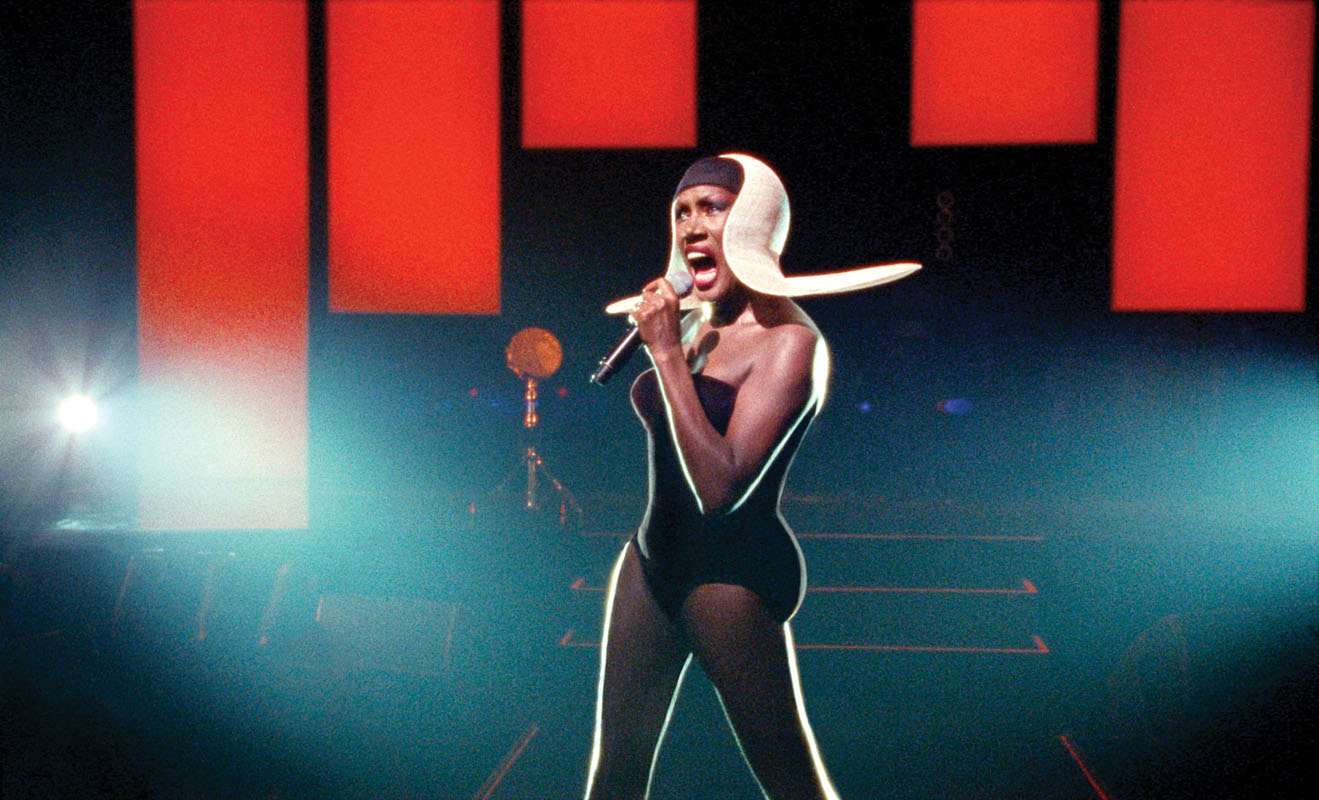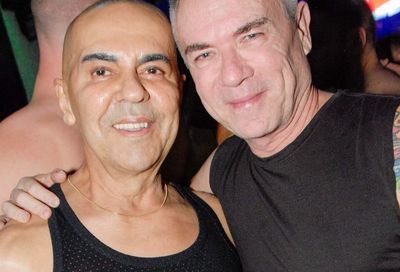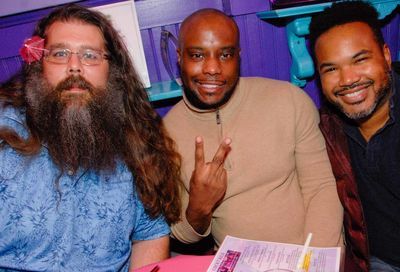Film Review: “Grace Jones: Bloodlight and Bami”
Sophie Fiennes' documentary garbles the biographical details but offers a prime glimpse of the legendary Grace Jones at work

Grace Jones: Bloodlight and Bami (★★★) is not a primer on the singularly stylish and provocative Ms. Jones. Rather, the intimate documentary — directed, shot, and edited by Sophie Fiennes — immerses the audience in Jones’ world for a return visit to her native Jamaica, during the recording of her 2008 album, Hurricane. The editing and chronology are fluid, and demand that viewers just keep up.
Kinetic concert footage, featured throughout, places viewers front-row for performances of the artist’s Hurricane World Tour, but the film unspools no helpful montage listing the lady’s accomplishments. There are no “Grace is…” testimonials from those who know her best. Fiennes doesn’t use captions to identify anyone on screen, which, frankly, would be helpful, since context is everything.
Watching Jones in conversation with one longtime collaborator, the sense of intimacy is powerful, but for those who don’t recognize photographer Jean-Paul Goude on sight (most people, that is), there would be no way to know she’s talking to perhaps her most important collaborator, the father of her only child. Grace and Goude have produced other great work together as well, though that’s not specifically the topic of their on screen conversation.

Fiennes keeps the audience in the room, but not necessarily in the know, as Jones treks around Jamaica visiting old friends and distant kin. Her family and associates toss around stories and first names willy-nilly. It’s easy to get lost trying to follow the family history exchanges between Jones, her mother, and other relatives about who went where and when.
Some family stories do come through loud and clear, however, even without clarification. Jones in Paris, happy to see her newborn granddaughter, needs no explanation. Far removed from that joy, but just as understandable, is the apparent pain and catharsis felt when Jones and family discuss the abusive nature of her grandfather, the man everyone called “Mas P.”
The film dangles the thread that Jones might see some of Mas P’s rage in herself. “Don’t make me lose it!” she yells at one member of her team. It doesn’t appear to take much for her to lose it, at least when the matter pertains to her work. On more than one occasion, Fiennes captures that Grace Jones’ patience runs eternally thin when it comes to someone or something potentially compromising her artistic vision or bottom line.
On the other hand, where family and home are concerned, Jones exercises a refreshing calmness and openness. Onstage, of course, she also exercises a certain grace. The starkly lit concert footage, shot mostly at Dublin’s Olympia Theatre, looks and sounds great, with Jones still a master of the rhythm, in an array of stunning Philip Treacy headpieces.

One particularly illuminating sequence tracks the inception of her song “Love You to Life,” from just a bass-line that a producer plays for Jones, to her later recording the vocal, then finally delivering a fiery performance of the finished song in concert. What this film does well is capture the artist at work.
Bloodlight and Bami delivers a real rush showing Jones being the boss in every aspect of her business, whether marshaling legendary musicians Sly & Robbie to show up for a recording session, or standing up to the producers of a French TV show.
The sequence at the French studio, perhaps more than any other in the film, demonstrates what nerve it takes to be Grace Jones, (or any pop star, for that matter). For a studio performance of Jones’ classic disco-lite rendition of “La Vie en Rose,” the TV show’s director insists on surrounding her with a harem of scantily clad female dancers.
Jones deems the whole concept “tacky,” and is particularly upset that the staging implies she’s a bordello madame offering her wares. Based on what’s shown, she isn’t wrong, but she really has to put her foot down to get anywhere persuading the defensive producer to change the concept. She knows she’ll be the name held responsible for how the performance is perceived, just as she acknowledges that she’ll take the blame from the dancers if she gets her way and they’re cut from the number.
But the artist wants what she wants. Grace Jones is, and has always been, willing to fight to present the concepts, looks, and sounds that excite her. The film doesn’t shy away from her fighting spirit.
Yet, it also relishes the positive energy she exudes, and the success she’s earned for her artistry and her defiance. The lady enjoys a life of champagne and oysters, late nights out on dance floors from New York to Barcelona, and visits with her grandchild. She returns home to Jamaica bearing new hats for her mother. Grace Jones is made real, and she even gleefully quotes Dolores Claiborne: “Sometimes you have to be a high-riding bitch to survive.”
Grace Jones: Bloodlight and Bami is not rated, and opens at the Landmark E Street Cinema on Friday, May 11. Visit landmarktheatres.com.
Support Metro Weekly’s Journalism
These are challenging times for news organizations. And yet it’s crucial we stay active and provide vital resources and information to both our local readers and the world. So won’t you please take a moment and consider supporting Metro Weekly with a membership? For as little as $5 a month, you can help ensure Metro Weekly magazine and MetroWeekly.com remain free, viable resources as we provide the best, most diverse, culturally-resonant LGBTQ coverage in both the D.C. region and around the world. Memberships come with exclusive perks and discounts, your own personal digital delivery of each week’s magazine (and an archive), access to our Member's Lounge when it launches this fall, and exclusive members-only items like Metro Weekly Membership Mugs and Tote Bags! Check out all our membership levels here and please join us today!
























